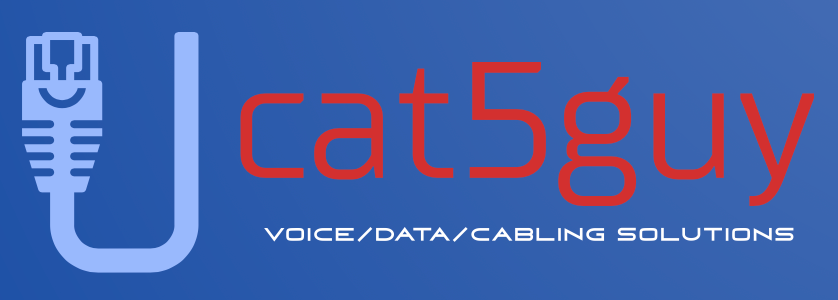PRI Phone vs. VoIP Systems: Features, Benefits & Choosing the Right One
In today’s fast-paced business environment, having a reliable and scalable phone system is critical to maintaining smooth operations and customer communication.
Two leading options dominate the market: PRI phone systems and VoIP.
Primary Rate Interface (PRI) is a traditional phone system that uses dedicated physical circuits for voice communication, offering stability and quality. On the other hand, Voice over Internet Protocol (VoIP) delivers modern, internet-based calling with flexible and cost-effective features.
Each solution comes with its own advantages, limitations, and pricing considerations. Understanding the key differences between a PRI phone system and VoIP is essential for making the right choice for your business needs.
Understanding PRI in Telecommunication
What is PRI?
Primary Rate Interface (PRI) is a telecommunications standard under the ISDN primary rate interface technology. It allows businesses to manage multiple voice and data transmissions over a single PRI circuit.
How PRI Works
PRI operates on copper-based lines, ensuring consistent and high-quality voice communication.
Typically, one PRI circuit includes 23 voice channels and one data channel.
Used by call centers, financial institutions, and enterprises that require high call volumes.
PRI Benefits for Businesses
✅ Reliable Call Quality – Since PRI uses dedicated circuits, call clarity remains unaffected by network congestion.
✅ Secure Communication – The closed network structure makes PRI less vulnerable to cyber threats.
✅ Seamless Integration – Works natively with PBX and traditional phone systems.
✅ Consistent Performance – PRI lines are not affected by internet speed fluctuations.
PRI Limitations
❌ Higher Costs – Requires specialized hardware, increasing installation and maintenance expenses.
❌ Difficult Scalability – Adding new lines requires physical infrastructure upgrades.
❌ Limited Remote Work Support – PRI is best suited for on-premise setups, making it less ideal for distributed teams.
Understanding VoIP Technology: A Modern Business Solution
What is VoIP?
Voice over Internet Protocol (VoIP) is a cloud-based phone system that enables voice calls over the internet, eliminating the need for traditional phone lines.
How VoIP Works
VoIP converts voice signals into digital data.
These signals are transmitted over an internet connection instead of physical wires.
Works with VoIP phone service, mobile devices, and desk phones.
Benefits of VoIP for Businesses
✅ VoIP Cost Savings – No physical infrastructure needed, reducing both initial and ongoing costs.
✅ Scalability – Adding or removing phone lines requires no additional hardware.
✅ Remote Work Support – Employees can make and receive calls from anywhere using mobile devices.
✅ Advanced Features – Includes conference calls, call forwarding, voicemail-to-email, and CRM integration.
VoIP Challenges
❌ Internet Dependency – Requires a stable connection for high-quality voice transmission.
❌ Security Concerns – Needs encryption and firewall protection to prevent cyber threats.
PRI vs. VoIP: A Feature-by-Feature Comparison
1. Cost Efficiency: VoIP Cost Savings vs. PRI Expenses
PRI Costs:
High setup costs – Requires PBX systems, PRI ports, and traditional infrastructure.
Ongoing expenses – Maintenance, hardware repairs, and service fees.
Long-distance call costs – More expensive than VoIP for international calling.
VoIP Costs:
No physical infrastructure needed, reducing installation and operational costs.
Flexible pricing models, including pay-as-you-go and subscription-based plans.
Cheaper long-distance and international calls, making it ideal for global businesses.
Winner: VoIP – More affordable for small businesses and enterprises alike.
2. Call Quality & Reliability: PRI vs. VoIP
PRI Call Quality:
Uses dedicated phone lines, ensuring consistent and high-quality calls.
Not affected by network congestion or internet fluctuations.
VoIP Call Quality:
Depends on internet bandwidth—low speeds can cause choppy audio, delays, or dropped calls.
High-speed internet with Quality of Service (QoS) can ensure crystal-clear communication.
Winner: PRI – Superior for businesses that require 100% call reliability.
3. Scalability & Flexibility: VoIP vs. PRI
PRI Scalability:
Adding more phone lines requires installing new circuits, which is costly and time-consuming.
Fixed infrastructure limits flexibility.
VoIP Scalability:
Easily add or remove phone lines via cloud-based management.
Works well for growing businesses, remote teams, and call centers.
Winner: VoIP – Ideal for fast-scaling businesses.
4. Security: PRI vs. VoIP
PRI Security:
Physical phone lines make PRI less susceptible to cyber threats.
Difficult to hack compared to internet-based communication.
VoIP Security:
Requires robust encryption and security measures.
Vulnerable to hacking, DDoS attacks, and fraud if not properly secured.
Winner: PRI – Better for highly regulated industries like finance and healthcare.
Which Business Phone System Should You Choose?
Choose PRI If:
✔️ You need high call reliability and security.
✔️ Your business relies on legacy PRI voice systems.
✔️ You operate a large call center with high-volume incoming calls.
Choose VoIP If:
✔️ You want cost savings and remote work flexibility.
✔️ You need advanced features like CRM integrations and conference calls.
✔️ Your business requires scalability and easy expansion.
Conclusion: PRI vs. VoIP – Making the Right Choice
Both PRI and VoIP serve unique business needs. PRI is best for reliability and security, while VoIP excels in cost savings, scalability, and remote capabilities.
For modern, growing businesses, VoIP solutions provide a cost-effective and flexible communication system. However, organizations prioritizing call quality and security may find PRI a better fit.
By carefully assessing your operational needs, you can select the best communications system for long-term success.


